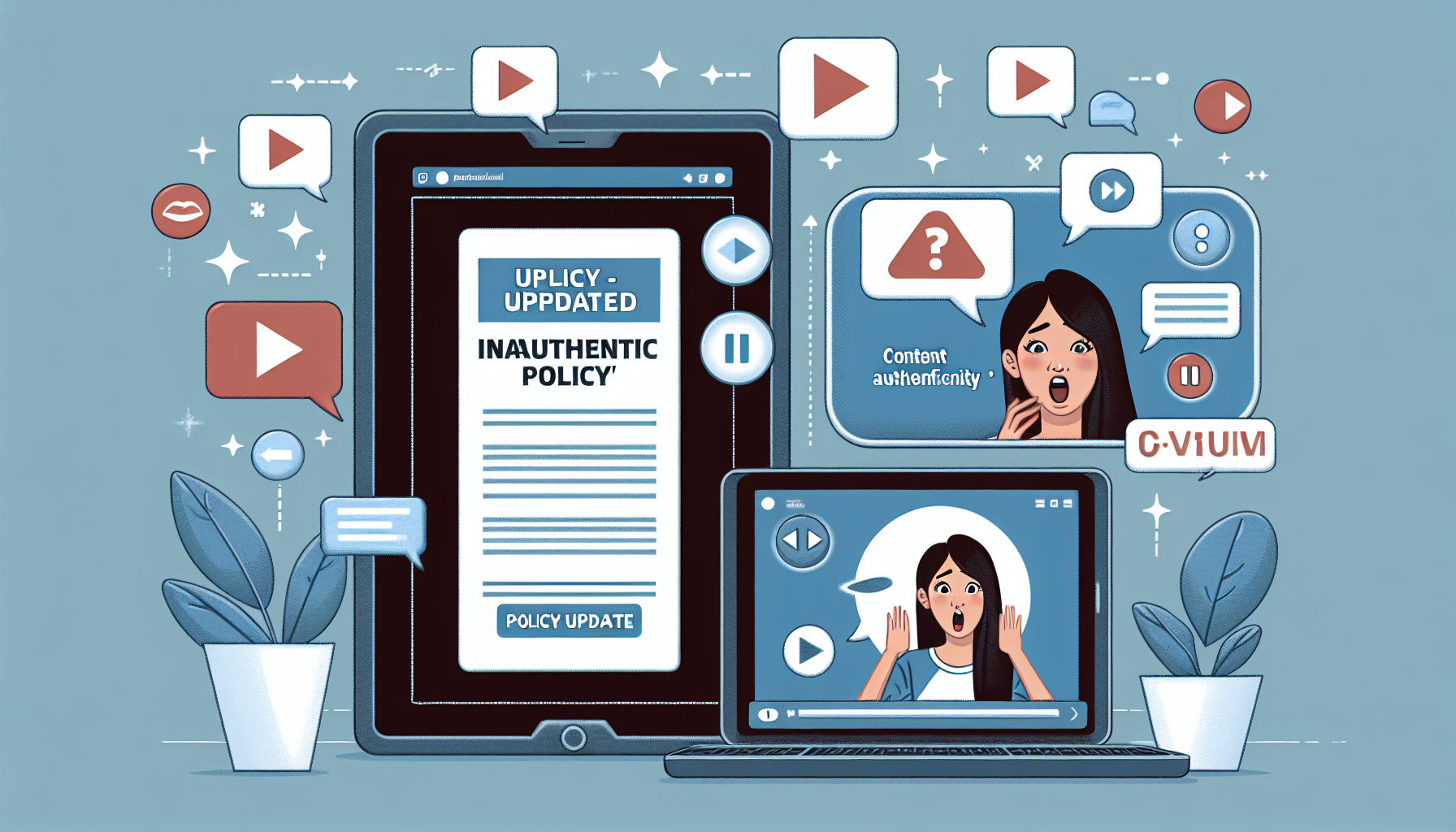
YouTube’s Revised Monetization Guidelines: Essential Information for Creators
Grasping YouTube’s Inauthentic Content Regulation
To uphold the quality of its platform, YouTube has recently revised its monetization rules, focusing particularly on inauthentic content. This initiative is designed to ensure that creators receive compensation for original and genuine content, instead of content that is mass-produced or formulaic. The policy, formerly referred to as the repetitious content guideline, has now been renamed the inauthentic content regulation. This change emphasizes YouTube’s dedication to nurturing a creative and authentic atmosphere for its users.
Defining Inauthentic Content
YouTube has provided clear illustrations of what it deems to be inauthentic content. This includes videos that mainly consist of readings from external sources, like text from websites or news feeds, without any supplementary narrative or commentary. Moreover, image slideshows or scrolling text that lack educational significance or storytelling are also classified as inauthentic. These forms of content are not eligible for monetization, as they do not contribute original or meaningful material to the platform.
The Outlook for Reaction Videos and Commentary Channels
Enthusiasts of reaction videos and commentary channels can relax. YouTube has confirmed that these types of content will remain unaffected by the new inauthentic content regulation. Reaction channels, which often contain clips for examination, review, or commentary, are deemed original content as they offer distinct insights and viewpoints. This differentiation guarantees that creators who enhance value with their reactions and commentary can continue to profit from their work.
Reused Content: What to Steer Clear Of
While reaction videos are considered safe, creators should be wary of reused content. YouTube has indicated that content uploaded multiple times by various creators or content taken from other online sources without substantial alterations falls into the reused content category. Such content is also excluded from monetization, as it does not provide new or original contributions to the platform.
The Effect on AI-Generated Content
The modification to YouTube’s monetization rules occurs in light of rising concerns regarding AI-generated content. The platform’s updated guidelines aim to tackle these issues by ensuring that AI-generated materials do not overshadow authentic and creative content. By clarifying its regulations, YouTube strives to find a balance between innovation and originality, encouraging creators to concentrate on generating unique and engaging material.
Conclusion
YouTube’s revamped monetization guidelines underscore the platform’s commitment to endorsing original and authentic content. By explicitly outlining inauthentic and reused content, YouTube aims to reward creators who provide genuine value to the platform. Reaction videos and commentary channels remain unaffected, enabling creators to persist in sharing their distinctive insights. As the digital environment evolves, YouTube’s guidelines serve as a reminder of the significance of originality and creativity in content production.
Q&A
What is YouTube’s inauthentic content regulation?
YouTube’s inauthentic content regulation is a framework of guidelines that bans the monetization of content that is mass-produced or lacks originality. This encompasses videos that mainly showcase readings from other sources without added commentary or narrative.
Are reaction videos influenced by YouTube’s revised rules?
No, reaction videos are not influenced by YouTube’s new inauthentic content regulation. These videos, which commonly include analysis, review, or commentary, are categorized as original content and remain viable for monetization.
What qualifies as reused content on YouTube?
Reused content on YouTube denotes videos that are uploaded multiple times by different creators or that are copied from other online sources without significant changes. Such content is not eligible for monetization as it does not provide new or original contributions.
How does YouTube’s regulation address AI-generated content?
YouTube’s updated monetization guidelines aim to tackle worries about AI-generated content by ensuring such materials do not overshadow authentic and creative contributions. The platform promotes originality and meaningful input from creators.
Can I monetize videos that feature clips from other sources?
Yes, you can monetize videos that include clips from other sources, as long as they are utilized for analysis, review, or commentary and provide unique value to the content. This form of content is not classified as reused or inauthentic according to YouTube’s guidelines.